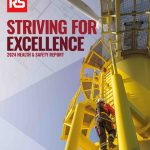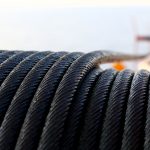 An estimated 75% of UK industrial lighting installations don’t meet current industry design standards and could be costing the UK as much as £1.4bn a year, according to research from Eriks UK.
An estimated 75% of UK industrial lighting installations don’t meet current industry design standards and could be costing the UK as much as £1.4bn a year, according to research from Eriks UK.
Adam Hicks, an expert in industrial lighting design at Eriks UK, commented: “The current standards for the specification of industrial lighting, BS EN 12464-1 and 12464-2, determine the level of illumination required to safely and successfully undertake specific tasks within the workplace.
“Yet, despite it being compulsory for facilities managers to meet BS EN standards, many within the industry are failing to do so. However, the most prevalent cause of non-compliance is not in fact poor quality equipment – although this will of course affect system performance if used – but actually failing to maintain the system in line with the manufacturer’s recommendations.
“We have found that there is a distinct lack of awareness among many maintenance professionals and facilities managers about the level of routine cleaning and maintenance required to not only comply with BS EN standards, but maximise the overall efficiency of the lighting system.”
Non-compliance starts when a lighting system continues to be used beyond the manufacturer’s specification. Most schemes are designed to comply with BS EN standards up to the point where bulk lamp change is required.
For example, if a manufacturer states lamps should be changed every 16,000 hours, for a plant operating 24/7 that is roughly every two years. Beyond the two year point the scheme is non-compliant, providing insufficient light as well as having a major impact on energy consumption, and therefore bills.
However, this is not always the case. Mr Hicks continued: “The real problem is that the level of re-lamping, cleaning and maintenance required by manufacturers is just not occurring, often due to the common location of industrial lighting in difficult-to-access areas. Therefore it is very rare that fittings are properly cleaned and maintained, and as a result lamps are only changed once they stop working.”
However, one of the most effective ways of extending the lifespan of an industrial lighting system is to invest in modern lighting technologies, principally LEDs. The light output of an LED remains constant over a greater period of time compared to traditional lamps – up to 50,000 hours, ensuring a longer period compliance.
Mr Hicks concluded: “Industrial lighting has evolved beyond recognition over the last 100 years. However, many of those responsible for running and maintaining the UK’s commercial properties have failed to understand both the health and safety, and cost implications of non-compliant systems. BS EN standards are there for a reason, yet this lack of awareness is costing the UK a vast sum of money, to the tune of £1.4bn a year.
“However, if the likes of LEDs – which can offer up to six years of compliance when running 24/7, and a less intensive maintenance programme – are embraced on an industrial scale, then the UK’s manufacturing base can recover a significant amount of wasted capital that can then be re-invested to further improve the running of each individual plant.”



